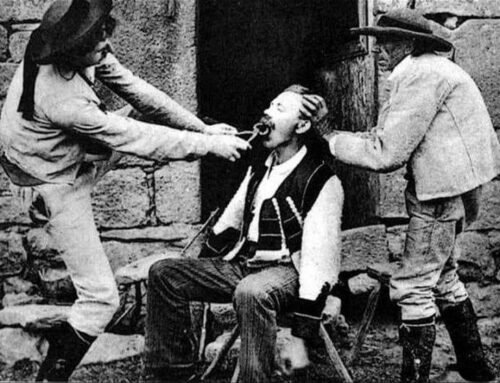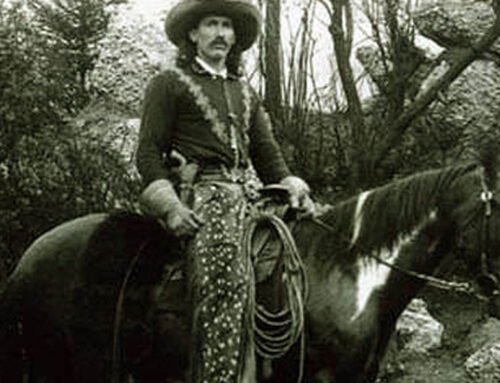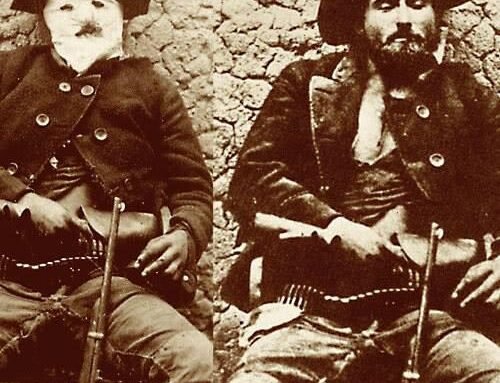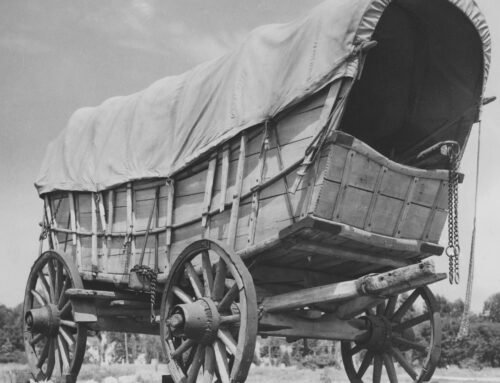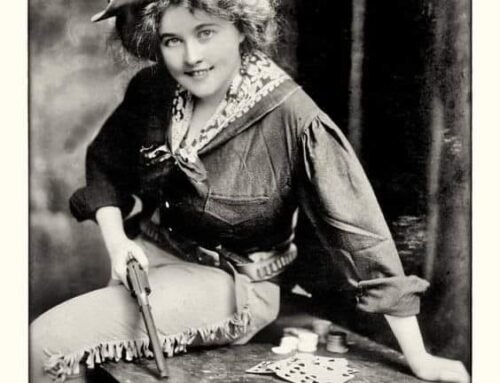Buffalo chips and meadow muffins
By western author Nick Brumby
“It is certain, at any rate, that … it would be as impossible to live without buffalo chips as to exist without flour, coffee, and tobacco.” — Dr. Elliott Coues, American army surgeon, historian, ornithologist, and author
 It was an insect repellent, a source of light, heat, and fuel, a trail marker – and it was produced by bison in such quantities that it covered the plains and prairies as far as the eye could see. The humble buffalo chip, in essence the dried excrement of American bison, was truly the dung that built the West.
It was an insect repellent, a source of light, heat, and fuel, a trail marker – and it was produced by bison in such quantities that it covered the plains and prairies as far as the eye could see. The humble buffalo chip, in essence the dried excrement of American bison, was truly the dung that built the West.
These dried patties of dung, also called meadow muffins, were a lifeline for pioneers, homesteaders, and Native Americans living on the prairie, where firewood was in short supply. For those in need, the unassuming buffalo chip was a valuable and highly-prized fuel to start fires, cook meals, and warm their homes.
Bison in their millions left the prairie covered in dung as far as the eye could see. Once dried, this dung could be collected and used as fuel. The process of creating buffalo chips was straightforward: people would collect the dung and let it dry in the sun (if it needed it). The resulting product was a relatively efficient and long-burning fuel, suitable for cooking and heating.
 In 1886 zoologist, conservationist, taxidermist, and author William T Hornaday lauded the merits of buffalo chips. Hornaday was somewhat of an expert on dung, serving as the first director of the New York Zoological Park, known today as the Bronx Zoo.
In 1886 zoologist, conservationist, taxidermist, and author William T Hornaday lauded the merits of buffalo chips. Hornaday was somewhat of an expert on dung, serving as the first director of the New York Zoological Park, known today as the Bronx Zoo.
“Buffalo chips—Last, but by no means least in value to the traveler on the treeless plains, are the droppings of the buffalo, universally known as “buffalo chips.” When over one year old and thoroughly dry, this material makes excellent fuel. Usually it occurs only where firewood is unobtainable, and thousands of frontiersmen have a million times found it of priceless value. When dry, it catches easily, burns readily, and makes a hot fire with but very little smoke, although it is rapidly consumed. Although not as good for a fire as even the poorest timber it is infinitely better than sage-brush, which, in the absence of chips, is often the traveler’s last resort.”
However, buffalo chips were used for many other things than just fuel for fires. Native American tribes used buffalo chips extensively. For some it was a ceremonial incense. Many tribespeople wore skins prepared with buffalo dung, oil and clay. In addition, some tribes used pulverized buffalo chips as an absorbent material in a baby’s diaper.
 According to accounts of the time, many Native American tribes also used buffalo chips as a tool when hunting. Sometimes, when a hunting party did not have the numbers to “surround” their bison prey, they collected buffalo chips and piled them up to head height. These piles were positioned in two rows, gradually converging towards each other, and leading towards a bluff. The bison were driven between these two rows of buffalo chips, in their panic would mistake the piles as more tribesmen. This helped the hunters guide the bison over the bluff, leaving them to collect the carcasses at their leisure.
According to accounts of the time, many Native American tribes also used buffalo chips as a tool when hunting. Sometimes, when a hunting party did not have the numbers to “surround” their bison prey, they collected buffalo chips and piled them up to head height. These piles were positioned in two rows, gradually converging towards each other, and leading towards a bluff. The bison were driven between these two rows of buffalo chips, in their panic would mistake the piles as more tribesmen. This helped the hunters guide the bison over the bluff, leaving them to collect the carcasses at their leisure.
Pioneers, travelers, Native Americans and homesteaders alike all knew the smoke from burning buffalo chips kept biting and stinging insects away. In addition, scouts and explorers used buffalo chips to mark the trails for others to follow, while land surveyors piled them up to mark off lines and points.
According to the Springfield Advertiser, soldiers on the move often collected buffalo chips during the last hour of a day of marching. While some thought buffalo chip fires gave off a stomach-churning stench, others found that they added a welcome tang to their monotonous salt pork and corned beef rations.
Old West US army surgeon, historian, ornithologist, and author Dr. Elliott Coues could not speak highly enough of the place buffalo chips held in fronter culture.
 ”As an agent in the progress of civilization, the spirit of which is expressed in the remark that westward the course of Empire takes its way, the buffalo chip arises to the plane of the steam-engine and the electric telegraph, and acquires all the dignity which is supposed to enshroud questions of national importance or matters of political economy. I am not sure, indeed, that it is not entitled to still higher rank, for it is certain, at any rate, that we move in some parts of the West without either steam or electricity (mules replacing both), where it would be as impossible to live without buffalo chips as to exist without flour, coffee, and tobacco.”
”As an agent in the progress of civilization, the spirit of which is expressed in the remark that westward the course of Empire takes its way, the buffalo chip arises to the plane of the steam-engine and the electric telegraph, and acquires all the dignity which is supposed to enshroud questions of national importance or matters of political economy. I am not sure, indeed, that it is not entitled to still higher rank, for it is certain, at any rate, that we move in some parts of the West without either steam or electricity (mules replacing both), where it would be as impossible to live without buffalo chips as to exist without flour, coffee, and tobacco.”
Buffalo chips seemed a ready-made fuel for settlers and homesteaders alike. Once dried they remained ready to burn for years – in fact, the longer they lay out in the elements the better they combust. They burned in much the same manner as peat, and while they produce little flame, they yield a very intense heat. In addition, throwing strips of buffalo fat onto the fire during the evening created a bright blaze, providing ample light by which to enjoy a meal or clean equipment for the coming day.
As the American West became more settled and bison numbers nosedived, buffalo chips became less popular as a fuel source. The expansion of railroads brought coal and other fuels with them, making them more accessible and affordable. Additionally, the discovery of oil and natural gas in various parts of the country further reduced the reliance on alternative fuels like buffalo chips.
The humble buffalo chip, once highly prized by pioneers and Native Americans alike, has now largely passed into memory.

About Nick Brumby
I like a good story. And of all stories, I love westerns the most.
As a kid, I spent far too many afternoons re-watching Clint Eastwood spaghetti westerns, picking up ‘Shane’ for just one more read, or saddling up beside Ben Cartwright when ‘Bonanza’ was on TV each afternoon.
I’m a former journalist and I love horses, dogs, and the occasional bourbon whiskey. I live with my wife, daughter and our ever-slumbering hound in a 1800’s-era gold mining town – our house is right on top of the last working gold mine in the area. There may not be much gold left, but there’s history wherever you look.
I hope you enjoy my westerns as much as I enjoyed writing them!
Happy trails,
Nick






















